The table lists various objects and units by the order of magnitude of their volume.
Contents





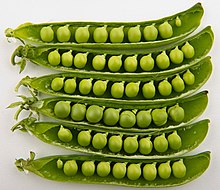



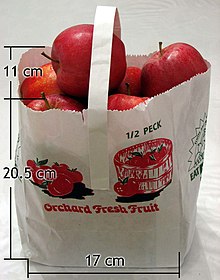

(55 US or 44 imp gal) drum
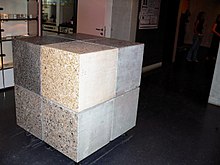




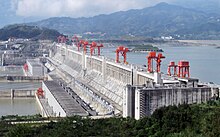
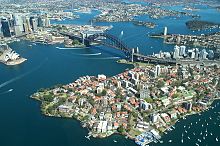

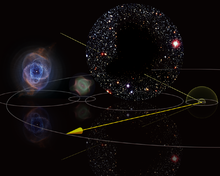


The table lists various objects and units by the order of magnitude of their volume.






















| Volume (m3) | Example |
|---|---|
| 4.22419×10−105 | The Planck volume |
| 1×10−90 | One cubic quectometre |
| 1×10−81 | One cubic rontometre |
| 1×10−72 | One cubic yoctometre |
| 1×10−63 | One cubic zeptometre |
| 1×10−54 | One cubic attometre |
| 1×10−45 | One cubic femtometre |
| ~2.82×10−45 | Volume of a proton |
| ~9.4×10−44 | Classical volume of an electron |
| 1×10−36 | One cubic picometre |
| 1×10−33 | One quectolitre |
| 1×10−30 | One cubic ångström or one rontolitre |
| 7.23×10−30 | Volume enclosed by the Van der Waals radius of a hydrogen atom |
| 3.936×10−29 | van der Waals volume of a helium atom |
| 1.91×10−29 | volume enclosed by the van der Waals radius of a gold atom |
| 3.75×10−29 | van der Waals volume of a H 2 molecule |
| 5.29×10−29 | van der Waals volume of a O 2 molecule |
| 1×10−27 | One cubic nanometre or one yoctolitre |
| 1×10−24 | One zeptolitre |
| 5×10−23 | Typical volume of structures on the Martian meteorite ALH84001 |
| 1×10−21 | One attolitre |
| 4×10−21 | Volume of hypothesised nanobacteria |
| 5×10−21 | Volume of a typical virus |
| Volume (m3) | Example |
|---|---|
| 1×10−18 | One cubic micrometre or one femtolitre |
| 9×10−18 | Average volume of a platelet |
| 9×10−17 | Normal volume of a human red blood cell |
| 2×10−16 | Average volume of a lymphocyte |
| 3.3×10−16 | Mean volume of a neutrophil granulocyte |
| 4.2×10−16 | Volume of an average monocyte |
| 1×10−15 | One picolitre |
| 2–9×10−15 | One drop from a high resolution colour inkjet printer |
| 1.3×10−13 | a very fine grain of sand (0.063 mm diameter, 3 micrograms) |
| 1×10−12 | One nanolitre |
| 6.2×10−11 | A medium grain of sand (0.5 mm diameter, 1.5 milligrams) |
| 5×10−10 | Volume of a poppy seed of 1-millimetre diameter [1] |
| 1×10−9 | One cubic millimetre or one microlitre |
| 4×10−9 | Volume of a mustard seed of 2-millimetre diameter |
| 2×10−8 | Volume of a small grain of rice 2 mm wide by 5 mm long |
| Volume (m3) | Example |
|---|---|
| 5.92×10−8 | One imperial minim |
| 6.16×10−8 | One US minim |
| 7×10−8 | Volume of a large grain of rice 3 mm wide by 12 mm long |
| 2×10−7 | Average volume of a pea |
| 1×10−6 | One cubic centimetre or one millilitre |
| 1.18×10−6 | One imperial fluid scruple |
| 1.23×10−6 | One US fluid scruple |
| 1.80×10−6 | One sai |
| 3.55×10−6 | One imperial fluid drachm |
| 3.70×10−6 | One US fluid dram |
| 3–5×10−6 | Average human ejaculation [2] |
| 3.55–5×10−6 | One teaspoon |
| 1.14×10−5 | One ligula |
| 1.42–2.0×10−5 | One tablespoon |
| 1.639×10−5 | One cubic inch |
| 1.80×10−5 | One shaku |
| 2.84×10−5 | One imperial fluid ounce |
| 2.96×10−5 | One US fluid ounce |
| 3.5×10−5 | Average amount of blood lost by a woman during menstruation |
| 4.5×10−5 | One cyathus |
| 6.8×10−5 | One acetabulum |
| 1×10−4 | Maximum volume of non-exempt liquids, gels, and aerosols allowed in a U.S. air traveler's carry-on luggage |
| 1.18×10−4 | One US gill |
| 1.36×10−4 | One quartarius |
| 1.42×10−4 | One imperial gill |
| 1.80×10−4 | One gō (a common size for serving sake) |
| 2.73×10−4 | one Roman hemina or cotyla |
| 3.3–3.75×10−4 | Volume of stubby or steinie of beer (Europe–330 mL, Canada–341 mL, Japan–350 mL, US–355 mL, Australia–375 mL) |
| 4×10−4 | Rough volume of the human urinary bladder |
| 4.73×10−4 | One US liquid pint |
| 5.46×10−4 | One sextarius |
| 5.51×10−4 | One US dry pint |
| 5.68×10−4 | One imperial pint |
| 7.5×10−4 | The most common volume for wine and liquor bottles, also the size of an Australian long neck of beer; sometimes called a 'fifth' in the United States for its approximation to the once-common one-fifth-gallon bottle |
| 9.46×10−4 | One US liquid quart |
| 1×10−3 | One cubic decimetre or one litre |
| 1.000028×10−3 | Volume of 1 kilogram of distilled water (at the temperature of maximum density (3.98 °C or 39.16 °F) and standard atmospheric pressure (101.325 kPa)) |
| 1.10×10−3 | One US dry quart |
| 1.14×10−3 | One imperial quart |
| 1.0–8.2×10−3 | Typical range of automobile engine displacements |
| 1.4×10−3 | Human brain cavity |
| 1.80×10−3 | One shō (formerly a common sake-bottle size) |
| 3.8×10−3 | One US liquid gallon |
| 4.36×10−3 | One semimodius |
| 4.40×10−3 | One US dry gallon |
| 4.5×10−3 | One imperial gallon |
| 5×10−3 | Approximate volume of the blood in one adult human |
| 6×10−3 | Average total volume of the lungs of a male human |
| 8.81×10−3 | One US peck |
| 9.09×10−3 | One imperial peck |
| 1.31×10−2 | One urna |
| 1.80×10−2 | One to |
| 1.85–3.6×10−2 | One Ancient Greek amphora |
| 2.62×10−2 | One Roman amphora |
| 3.4×10−2 | One French amphora |
| 2.83×10−2 | One cubic foot |
| 3.52×10−2 | One US bushel |
| 3.64×10−2 | One imperial bushel |
| 3.7–4.2×10−2 | One firkin |
| 6.0×10−2 | Gasoline fuel tank in a car (Volvo 240) [3] |
| 6.8–6.9×10−2 | One rundlet |
| 7.1×10−2 | Average volume of an adult human |
| 7.4–8.3×10−2 | One kilderkin |
| 9.55×10−2 | One US barrel for cranberries |
| 1.16×10−1 | One US dry barrel |
| 1.17×10−1 | One US beer barrel, 31 US gallons |
| 1.19×10−1 | One US fluid barrel (apart from oil or beer), 31.5 US gallons |
| 1.59×10−1 | One oil barrel, 42 US gallons, about one tierce (158–160 L) |
| 1.64×10−1 | One imperial barrel, 36 imperial gallons |
| 1.80×10−1 | One koku |
| 2×10−1 | Standard drum size used for shipping bulk cargo |
| 2.2–2.5×10−1 | One hogshead |
| 3.1–3.2×10−1 | One puncheon or tertian |
| 4.7–4.9×10−1 | One butt (an old unit for beer and wine) |
| 5.24×10−1 | One culeus |
| 7.65×10−1 | One cubic yard |
| 9.5–9.8×10−1 | One tun (an old unit for beer and wine) |
| 1×100 | One cubic metre, one kilolitre or one stère—volume of a large domestic fridge-freezer (external dimensions) |
| 3.85×101 | External volume of a standard 20-foot ("TEU") cargo container, which has a capacity of 33.1 cubic metres |
| 7.7×101 | External volume of a standard 40-foot ("FEU") cargo container, which has a capacity of 67.5 cubic metres |
| Volume (m3) | Example |
|---|---|
| 1.05×102 | Volume of a rear-engine Leyland Titan London double-decker bus |
| 1.49×102 | Volume of any A Division New York City Subway car |
| 1×103 m3 (35,000 cu ft; 1.0×10−6 km3) | One cubic decametre or one megalitre |
| 1.233×103 | One acre-foot |
| 2.5×103 | Volume of an Olympic size swimming pool of minimal depth (50 m × 25 m × 2 m). |
| 3.054×103 | Volume of each of the nine spheres of the Atomium in Brussels |
| 1.13×104 | Gas volume in the first zeppelin LZ 1 |
| 1.1866×104 | Amount of concrete in Trbovlje Chimney |
| 1.56×104 | Quebec's 2001 output of maple syrup |
| 5.0×104 | Typical volume of a large gasometer |
| 8.5–9.9×104 | Volume of the Royal Albert Hall auditorium [4] |
| 1.84×105 | Volume of gas in the USS Macon (ZRS-5) zeppelin |
| 2.11890×105 | Volume of gas in the Hindenburg zeppelin |
| 6.50×105 | Volume of crude oil that can be carried aboard the Knock Nevis supertanker |
| 9.66×105 | Volume of Taipei 101's gross floor space [5] |
| 1×106 m3 (1,300,000 cu yd; 0.0010 km3) | One cubic hectometre, one gigalitre or one kilostère |
| 1.4×106 | Volume the 1910 Lakeview Gusher oil spilt (the biggest oil gusher in US history) |
| 1.5644×106 | Volume of concrete in the Panama Canal Locks |
| 2.6006×106 | Volume of stone in the Great Pyramid of Giza |
| 3×106 | Approximately amount of mud and clay that slid into the South Nation River valley as a landslide on 20 June 1993 |
| 3.33×106 | Volume of concrete in Hoover Dam |
| 3.664883×106 | Volume of the NASA's Vehicle Assembly Building |
| 8×106 | Volume of chalk excavated in the construction of the Channel Tunnel |
| 1×107 | Volume of Chagan Lake, artificial lake created by nuclear explosion |
| 1.7×107 | Volume of material in the Gatun Dam, completed in 1913 |
| 2.8×107 | Volume of concrete in the Three Gorges Dam, the world's largest concrete structure |
| 4.3×107 | Volume of Aswan Dam |
| 9×107 | Volume of gas required per day by India in 2005 |
| 1.01×108 | Volume of the Grimsel reservoir |
| 1.73×108 | Volume of Lake Baldegg, Switzerland |
| 2.05×108 | Volume of material excavated in the construction of the Panama Canal |
| 2.2×108 | Volume of Lac de la Gruyère, Switzerland |
| 2.85×108 | Volume of Lake Halwill, Switzerland |
| 3.20–3.35×108 | Volume of the Great Wall of China |
| 3–5×108 | Volume of all humans alive on the planet (based on an average mass of 40–70 kg per human) |
| 4×108 | Predicted volume of natural gas required per day by India in 2025 |
| 5×108 | One sydharb—volume of Sydney Harbour, Australia [6] |
| 6.93×108 | Volume of Lake Murten, Switzerland |
| 1×109 m3 (1.3×109 cu yd; 1.0 km3) | One cubic kilometre or one teralitre |
| 1.2×109 | Approximate volume of rock ejected during the 1980 eruption of Mount St. Helens |
| 1.3×109 | volume of Lake Biel, Switzerland |
| 2.5×109 | volume of Lake Walen, Switzerland |
| 3.2×109 | volume of Lake Zug |
| 3.9×109 | Volume of Lake Zürich |
| 4.168×109 | One cubic mile |
| 5×109 | Volume of crude oil consumed by the world in a year |
| 5.17×109 | volume of Lake Brienz |
| 5.2×109 | Volume of the artificial Gatun Lake (Panama Canal) |
| 6.5×109 | Volume of Lake Thun |
| 6.5×109 | volume of Lake Lugano |
| 1×1010 | Estimated volume of rock ejected during the 1991 eruption of Mount Pinatubo |
| 1.4×1010 | volume of Lake Neuchâtel |
| 1.45×1010 | Volume of Lake Lucerne |
| 3.52×1010 | Volume of Lake Mead, the reservoir of the Hoover Dam |
| 3.7×1010 | Volume of Lago Maggiore |
| 5.5×1010 | Volume of Lake Constance |
| 8.89×1010 | Volume of Lake Geneva |
| 1×1011 | Estimated volume of rock exploded in eruption of Mount Tambora volcano on 12 April 1815 |
| 1.33×1011 | Volume of Lake Nasser |
| 1.44×1011 | Volume of Fedchenko Glacier and its tributaries |
| 2×1011 | Estimated volume of the annual net inflow of seawater to the Black Sea (from the Mediterranean Sea via the Bosporus) |
| 2.8×1011 | Volume of Lake Onega |
| ~3×1011 | Volume of crude oil on Earth |
| 3.2×1011 | Estimated volume of the annual inflow of freshwater to the Black Sea |
| 4.84×1011 | Volume of Lake Erie |
| 8.37×1011 | Volume of Lake Ladoga |
| 1×1012 m3 (1.3×1012 cu yd; 1,000 km3) | One petalitre |
| 1.1×1012 | Volume of the Aral Sea in 1960 |
| 2.76×1012 | Volume of Lake Victoria |
| 2.8×1012 | Volume of magma erupted by the Toba supervolcano 74000 years ago |
| 4.918×1012 | Volume of Lake Michigan |
| 5×1012 | Volume of the Fish Canyon Tuff erupted by the La Garita Caldera |
| 5.5×1012 | Volume of the asteroid 433 Eros |
| 1.2232×1013 | Volume of Lake Superior |
| 1.84×1013 | Volume of Lake Tanganyika |
| 2.36×1013 | Volume of Lake Baikal |
| 5.5×1014 | Volume of the Black Sea |
| 1×1015 | One exalitre |
| 1×1015 m3 (1.3×1015 cu yd; 1,000,000 km3) | Volume of the Mariana Trench in the Pacific Ocean, which contains the deepest point on the Earth's surface |
| 2.6×1015 | Volume of Greenland ice cap |
| 3.7×1015 | Volume of the Mediterranean Sea |
| 1.54×1016 | Volume of water contained in the rings of Saturn (rough estimate) |
| 3×1016 | Volume of water contained in the Antarctic ice sheet (rough estimate) |
| 3×1017 | Volume of the Atlantic Ocean and volume of the Indian Ocean (rough estimates) |
| 4.5×1017 | Volume of Ceres |
| 1×1018 | One cubic megametre or one zettalitre—volume of the Pacific Ocean (rough estimate) |
| 1.335×1018 | Volume of all oceans on Earth |
| Volume (m3) | Example |
|---|---|
| 3×1018 | Estimated volume of Europa's oceans |
| 6.4×1018 | Volume of Pluto |
| 2.2×1019 | Volume of the Moon |
| 6.1×1019 | Volume of planet Mercury |
| 1.6×1020 | Volume of planet Mars |
| 9.28×1020 | Volume of planet Venus |
| 1×1021 | One yottalitre |
| 1.08×1021 | Volume of planet Earth |
| 2.25×1021 | Volume of all the rocky planets in the Solar System |
| 6.38×1022 | Volume of planet Neptune |
| 7.02×1022 | Volume of planet Uranus |
| 9.23×1023 | Volume of planet Saturn |
| 1×1024 | One ronnalitre |
| 1.53×1024 | Volume of planet Jupiter |
| 2.59×1024 | Total volume of all the planets in the Solar System |
| 1×1027 | One cubic gigametre or one quettalitre |
| 1.41×1027 | Volume of the Sun |
| ~1×1030 | volume of Alcyone, brightest star in the Pleiades [7] |
| ~1.7×1031 | Volume of Arcturus, brightest star in Boötes [8] |
| 3.4×1032 | Volume of Rigel, the brightest star in Orion [9] |
| ~5×1032 | Volume of a red giant the same mass as the Sun |
| 1.4×1033 | Volume of γ Crucis, a red giant in Crux [10] [11] |
| ~1×1034 | Volume of Deneb, a white supergiant in Cygnus [12] |
| 6.4×1034 | Volume of η Carinae, a white supergiant in Cygnus [12] |
| 1.3×1035 | Estimated volume of S Orionis [13] |
| 1.5×1035 | Volume of Antares, a Mira variable in Orion [14] |
| ~2.75×1035 | Volume of Betelgeuse |
| 1×1036 | One cubic terametre |
| 4×1036 | Possible volume of μ Cephei (estimates vary) |
| 8×1036 | Estimated volume of VY Canis Majoris, a red hypergiant star [15] |
| 3.9×1038 | volume of a sphere which would enclose the orbit of Neptune |
| 6–10×1039 | Possible volume of the Heliosphere inside the termination shock |
| 1.1×1041 | Daily increase in volume of the Cat's Eye Nebula [16] |
| 4×1043 | Annual increase in volume of the Cat's Eye Nebula [16] [17] |
| 1×1045 | One cubic petametre |
| ~1.7×1045 | Approximate volume of the Stingray Nebula [18] |
| ~2.7×1046 | Volume of the bright inner nebula of the Cat's Eye Nebula [16] |
| 5.5×1046 | The volume of a Bok globule like Barnard 68 [19] [20] |
| 4.4×1047 | The volume of a Bok globule one light year across [19] [20] |
| 8.47×1047 | One cubic light-year |
| ~1.7×1048 | Volume of the Oort Cloud, assuming a radius of 50000 AU |
| ~1.6×1049 | Volume of the Dumbbell Nebula |
| 2.94×1049 | One cubic parsec |
| 4.4×1050 | Approximate volume of the Bubble Nebula (NGC 7635) (assuming a radius of 5 light years, sources differ) [21] [22] [23] |
| 1×1054 | One cubic exametre |
| 3×1055 | Estimated volume of a small dwarf galaxy like NGC 1705 |
| 3.3×1055 | Estimated volume of the Local Bubble, assuming a radius of 100 parsecs (~39 million cubic light years) |
| 3×1058 | Estimated volume of a dwarf galaxy like the Large Magellanic Cloud |
| 2.94×1058 | One cubic kiloparsec |
| ~3.3×1061 | Volume of a galaxy like the Milky Way |
| 1×1063 | One cubic zettametre—approximate volume of whole Milky Way including Globes |
| ~5×1068 | Volume of the Local Group |
| 6.7×1071 | Volume of the Gemini Void |
| 1×1072 | One cubic yottametre |
| 1.2×1072 | Volume of the Local Void (about 1.4×1024 cubic light years) [24] |
| 3.5×1072 | Volume of the Virgo Supercluster [25] |
| 1×1073 | Volume of the Sculptor Void (about 1.1×1025 cubic light years) [24] |
| 2×1073 | Least volume of the Southern Local Supervoid (about 2.2×1025 cubic light years) [26] |
| 3.4×1080 | Volume of the Observable Universe |
| 1×1081 | One cubic ronnametre |
| 7.1×1081 | Lower bound on the volume of the universe based on analysis of WMAP [27] |
| 6.7×1083 | Lower bound on the volume of the entire universe |
| 1×1090 | One cubic quettametre |
| ~1×10113 | rough upper bound on the physical size of the present universe, a result of the maximum number of Hubble volumes. [28] |

NGC 604 is an H II region inside the Triangulum Galaxy. It was discovered by William Herschel on September 11, 1784. It is among the largest H II regions in the Local Group of galaxies; at the galaxy's estimated distance of 2.7 million light-years, its longest diameter is roughly 1,520 light years (~460 parsecs), over 40 times the size of the visible portion of the Orion Nebula. It is over 6,300 times more luminous than the Orion Nebula, and if it were at the same distance it would outshine Venus. Its gas is ionized by a cluster of massive stars at its center with 200 stars of spectral type O and WR, a mass of 105 solar masses, and an age of 3.5 million years; however, unlike the Large Magellanic Cloud's Tarantula Nebula central cluster (R136), NGC 604's one is much less compact and more similar to a large stellar association.

The Cat's Eye Nebula is a planetary nebula in the northern constellation of Draco, discovered by William Herschel on February 15, 1786. It was the first planetary nebula whose spectrum was investigated by the English amateur astronomer William Huggins, demonstrating that planetary nebulae were gaseous and not stellar in nature. Structurally, the object has had high-resolution images by the Hubble Space Telescope revealing knots, jets, bubbles and complex arcs, being illuminated by the central hot planetary nebula nucleus (PNN). It is a well-studied object that has been observed from radio to X-ray wavelengths.

The Eagle Nebula is a young open cluster of stars in the constellation Serpens, discovered by Jean-Philippe de Cheseaux in 1745–46. Both the "Eagle" and the "Star Queen" refer to visual impressions of the dark silhouette near the center of the nebula, an area made famous as the "Pillars of Creation" imaged by the Hubble Space Telescope. The nebula contains several active star-forming gas and dust regions, including the aforementioned Pillars of Creation. The Eagle Nebula lies in the Sagittarius Arm of the Milky Way.
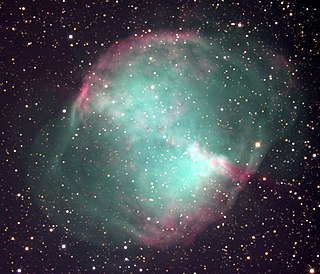
The Dumbbell Nebula is a planetary nebula in the constellation Vulpecula, at a distance of about 1360 light-years. It was the first such nebula to be discovered, by Charles Messier in 1764. At its brightness of visual magnitude 7.5 and diameter of about 8 arcminutes, it is easily visible in binoculars and is a popular observing target in amateur telescopes.

The Eskimo Nebula, also known as the Clown-faced Nebula, Lion Nebula, or Caldwell 39, is a bipolar double-shell planetary nebula (PN). It was discovered by astronomer William Herschel in 1787. The formation resembles a person's head surrounded by a parka hood. It is surrounded by gas that composed the outer layers of a Sun-like star. The visible inner filaments are ejected by a strong wind of particles from the central star. The outer disk contains unusual, light-year-long filaments.
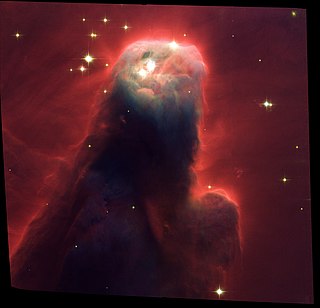
The Cone Nebula is an H II region in the constellation of Monoceros. It was discovered by William Herschel on December 26, 1785, at which time he designated it H V.27. The nebula is located about 830 parsecs or 2,700 light-years from Earth. The Cone Nebula forms part of the nebulosity surrounding the Christmas Tree Cluster. The designation of NGC 2264 in the New General Catalogue refers to both objects and not the nebula alone.

IC 342 is an intermediate spiral galaxy in the constellation Camelopardalis, located relatively close to the Milky Way. Despite its size and actual brightness, its location behind dusty areas near the galactic equator makes it difficult to observe, leading to the nickname "The Hidden Galaxy", though it can readily be detected even with binoculars. If the galaxy were not obscured, it would be visible by naked eye. The dust makes it difficult to determine its precise distance; modern estimates range from about 7 million light-years (Mly) to about 11 Mly. The galaxy was discovered by William Frederick Denning in 1892. It is one of the brightest in the IC 342/Maffei Group, one of the closest galaxy groups to the Local Group. Edwin Hubble first thought it to be in the Local Group, but it was later determined not to be a member.

NGC 2440 is a planetary nebula, one of many in our galaxy. Its central star, HD 62166, is possibly the hottest known white dwarf, about 400,000°F(200,000°C). The nebula is situated in the constellation Puppis.

NGC 6302 is a bipolar planetary nebula in the constellation Scorpius. The structure in the nebula is among the most complex ever seen in planetary nebulae. The spectrum of Butterfly Nebula shows that its central star is one of the hottest stars known, with a surface temperature in excess of 250,000 degrees Celsius, implying that the star from which it formed must have been very large.
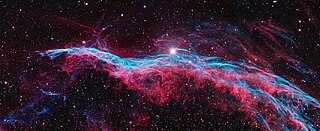
The Veil Nebula is a cloud of heated and ionized gas and dust in the constellation Cygnus.
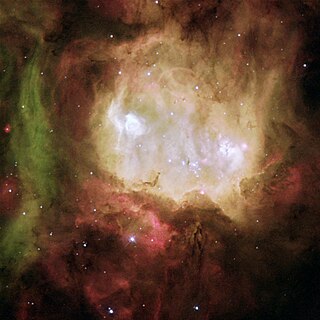
NGC 2080, also known as the Ghost Head Nebula, is a star-forming region and emission nebula to the south of the 30 Doradus (Tarantula) nebula, in the southern constellation Dorado. It belongs to the Large Magellanic Cloud, a satellite galaxy to the Milky Way, which is at a distance of 168,000 light years. NGC 2080 was discovered by John Frederick William Herschel in 1834. The Ghost Head Nebula has a diameter of 50 light-years and is named for the two distinct white patches it possesses, called the "eyes of the ghost". The western patch, called A1, has a bubble in the center which was created by the young, massive star it contains. The eastern patch, called A2, has several young stars in a newly formed cluster, but they are still obscured by their originating dust cloud. Because neither dust cloud has dissipated due to the stellar radiation, astronomers have deduced that both sets of stars formed within the past 10,000 years. These stars together have begun to create a bubble in the nebula with their outpourings of material, called stellar wind.

A bipolar nebula is a type of nebula characterized by two lobes either side of a central star. About 10-20% of planetary nebulae are bipolar.

NGC 7635, also known as the Bubble Nebula, Sharpless 162, or Caldwell 11, is an H II region emission nebula in the constellation Cassiopeia. It lies close to the open cluster Messier 52. The "bubble" is created by the stellar wind from a massive hot, 8.7 magnitude young central star, SAO 20575 (BD+60°2522). The nebula is near a giant molecular cloud which contains the expansion of the bubble nebula while itself being excited by the hot central star, causing it to glow. It was discovered in November 1787 by William Herschel. The star BD+60°2522 is thought to have a mass of about 44 M☉.

NGC 290 is an open cluster of stars in the southern constellation of Tucana. This cluster was discovered September 5, 1826, by Scottish astronomer James Dunlop. It lies some 200,000 light years away from the Sun in the Small Magellanic Cloud galaxy. The cluster is an estimated 30–63 million years old and is around 65 light years across.

NGC 265 is an open cluster of stars in the southern constellation of Tucana. It is located in the Small Magellanic Cloud, a nearby dwarf galaxy. The cluster was discovered by English astronomer John Herschel on April 11, 1834. J. L. E. Dreyer described it as, "faint, pretty small, round", and added it as the 265th entry in his New General Catalogue.

BD+60°2522 is a bright O-type star that has produced the Bubble Nebula with its stellar wind. The exact classification of the star is uncertain, with a number of spectral peculiarities and inconsistencies between the appearance of the star itself and the effects on the nearby nebulosity, but it is undoubtedly a highly luminous hot massive star. Direct spectroscopy yields a spectral class of O6.5 and an effective temperature around 37,500 K. It is a member of the Cassiopeia OB2 stellar association in the Perseus Arm of the galaxy at about 8,500 light-years' distance.

NGC 7008, also known as the Fetus Nebula is a planetary nebula with a diameter of approximately 1 light-year located at a distance of 2800 light years in northern Cygnus. It was discovered by William Herschel in 1787, in Slough, England. NGC 7008 is included in the Astronomical League's Herschel 400 observing program.NGC 7008 is that its intricate and delicate structures make it a fascinating target for both amateur and professional astronomers studying the late stages of stellar evolution and the formation of planetary nebulae.

Cometary knots, also referred as globules, are structures observed in several nearby planetary nebulae (PNe), including the Helix Nebula, the Ring Nebula, the Dumbbell Nebula, the Eskimo Nebula, and the Retina Nebula. They are believed to be a common feature of the evolution of planetary nebulae, but can only be resolved in the nearest examples. They are generally larger than the size of the Solar System, with masses of around 0.00001 times the mass of the Sun, which is comparable to the mass of the Earth. There are about 40,000 cometary knots in the Helix Nebula.

Bedin I is a dwarf spheroidal galaxy located in the constellation Pavo. It is situated around 28.38 million light-years from Earth, behind the globular cluster NGC 6752. Bedin I is possibly one of the oldest galaxies known, having formed around 10–13 billion years ago, and is one of the most isolated dwarf galaxies known, situated around 2.12 million light-years away from NGC 6744, its nearest neighbor with which it may be physically associated. As such, it has been deemed by astronomers as a "fossil" from the early universe. It was accidentally discovered by Italian astronomer Luigi Bedin, whose team was studying white dwarfs in NGC 6752 using the Hubble Space Telescope in September 2018; the discovery was announced in a paper published in January 2019.
Specifications: * 16 gallons/60 liters * 18 x 38 x 16 in. * Without lock ring, seals, and filler neck
Bok globules such as Barnard 68 are only about half a light-year across and weigh in at about two solar masses